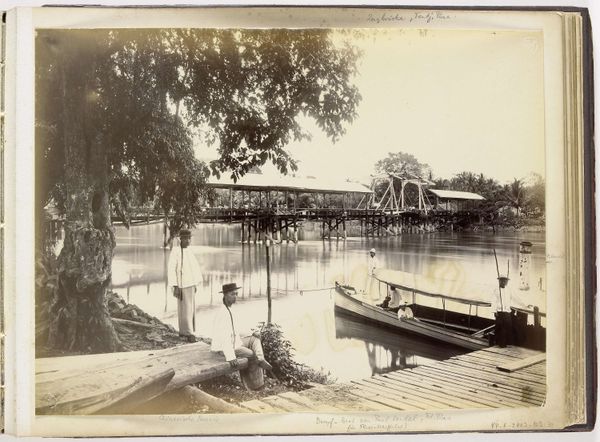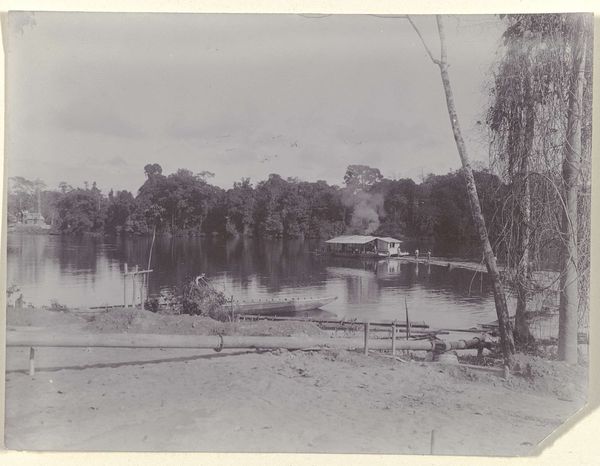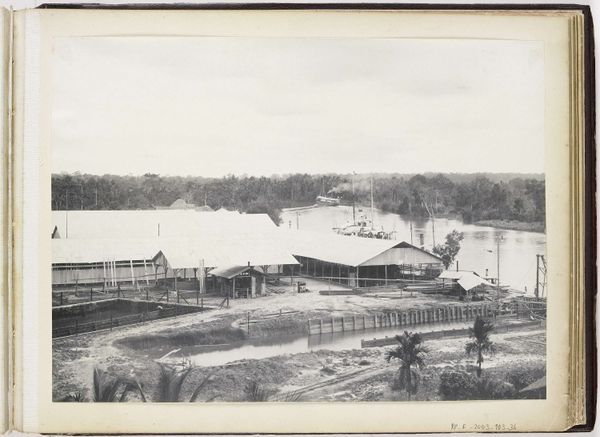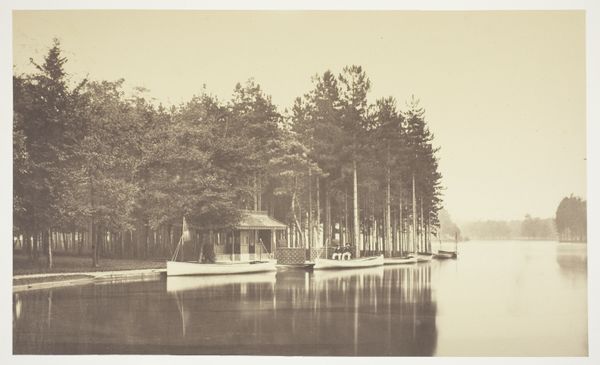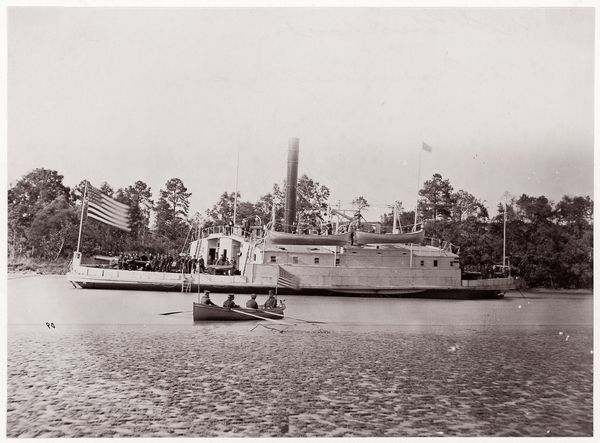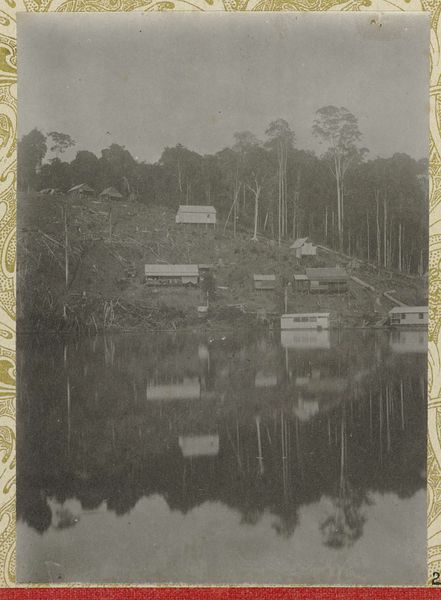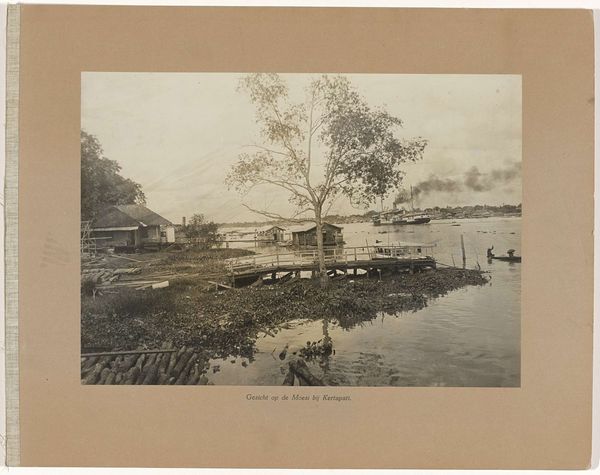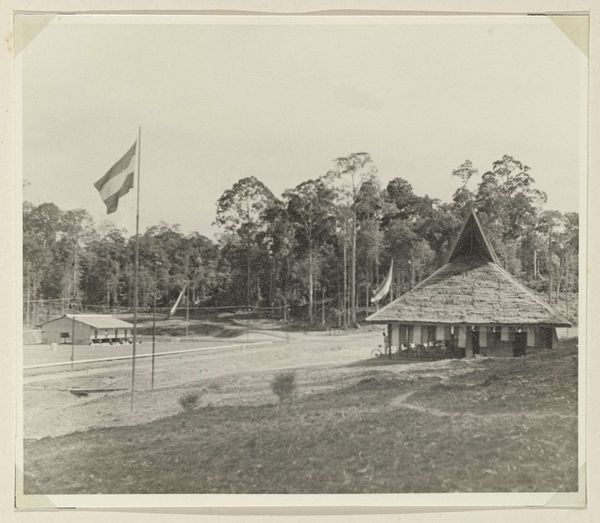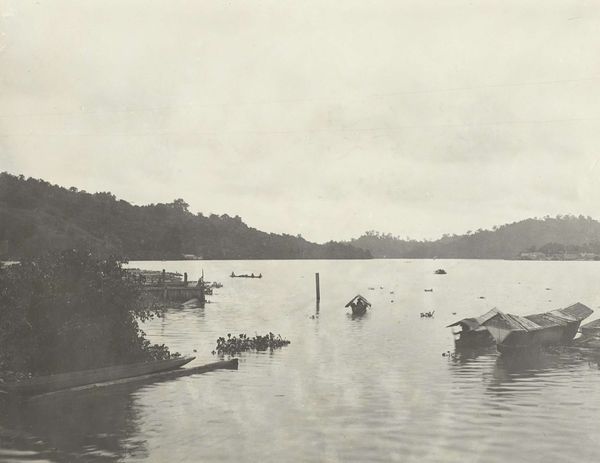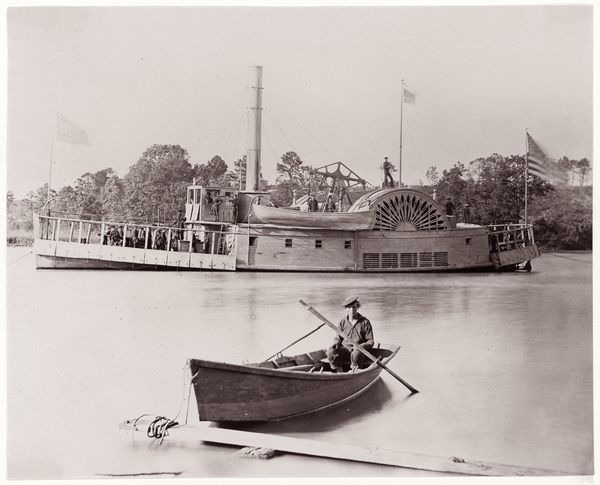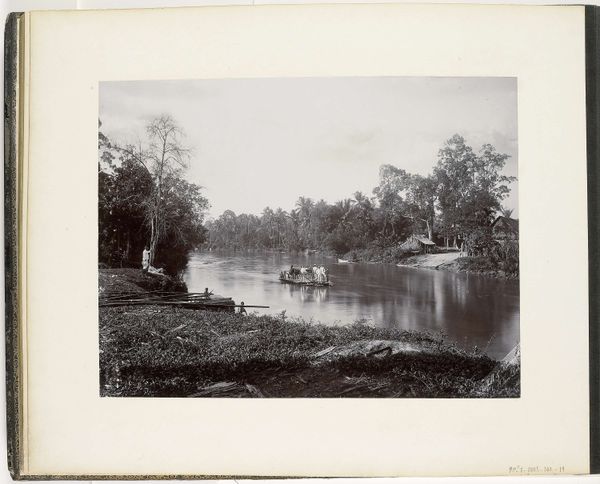
print, photography
# print
#
landscape
#
photography
#
monochrome photography
Dimensions: height 117 mm, width 180 mm
Copyright: Rijks Museum: Open Domain
Editor: This photograph, taken by Johanna Hermina Marmelstein sometime between 1900 and 1915, is called "A factory in Telok, situated on the water’s edge.” It's a really striking image, with this industrial structure emerging from what looks like a pristine natural environment. What catches your eye when you look at this? Curator: What I see is a complex relationship between labor, materials, and place. Look at the construction of that factory; likely sourced locally. What raw materials are being processed, and who is doing the work? That plume of smoke speaks volumes about industrial production and its impact. Editor: That makes me think about the contrast. The factory’s obviously made, assembled...the smoke a very visible sign of work. Then you have the water, the dense trees - things that seem untouched. Curator: Precisely! This highlights the extraction of raw materials and the transformation of the landscape to serve industrial demands. Where are those goods going? How are they being consumed? This image invites us to consider the colonial implications inherent in the production and global trade of resources extracted from places like Telok. Editor: So, you’re saying it's not just a picture of a factory, but a record of a system? Curator: Exactly. It speaks to global networks of labor and consumption, challenging romantic notions of untouched landscapes. Consider the photographer, Marmelstein – what was her role in documenting this process? Was she complicit in promoting the benefits of industry? Editor: I see it now, it’s way more layered than I initially thought. This image shows how resources and labor from this area fueled global manufacturing. It gives you a new perspective of what ‘landscape’ actually means. Curator: Indeed, it makes you question the inherent power dynamics involved.
Comments
No comments
Be the first to comment and join the conversation on the ultimate creative platform.
